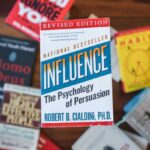Nathan Gold is a keynote speaker and a business coach who coaches people on how to prepare high-stakes presentations. In a recent speech, he provided 13 mistakes that entrepreneurs often make when pitching to investors or customers.
1- Weak Open
The number one mistake Nathan finds most people make when they are pitching to investors or customers is that they have a weak opening. A weak opening makes it hard for you to make that all-important good first impression. A weak opening is starting with an excuse or not starting on time.
Many presenters are nervous about their pitch and their nerves are greatest as they start out. Too often, the presenter will make an excuse in their opening statement, such as apologizing for the equipment or the meeting room, or they will wait past the scheduled meeting start time. Always start on time, no matter how many people are in the room. A weak opening leaves a bad initial impression on the audience and sets up the presenter to fail.
2- The Pitch Window
Make sure that you have a start time that doesn’t conflict with other things that are going on. Most meetings start and end on the hour. If one meeting ends on the hour and the next one starts on the next hour, they can’t start on time since participants are transiting between meetings. When it comes to meeting with busy people, one recommendation is to start the meeting at ten or fifteen minutes past the hour. As an added benefit, the extra time will allow you to greet participants or make sure all of your equipment and connections are working properly. Additionally, your stress level will be lower since you will have eased into the presentation.
The next thing that I would recommend any time you have to pitch to investors or customers is to verify the amount of time you have to make your pitch. Many presenters at the appointed start time launch into their slide deck and begin their pitch. According to Nathan, that is not the way to start an investor pitch. He recommends that you make sure nothing has changed since the time you set up the meeting by saying “I’d just like to verify the time we have together here. We have until 11:00, is that still the case?” If they say no, then you can adjust the presentation to make sure that people get out when they need to.
Once you’re ready to start your presentation, the opening statement needs to draw the audience in to get everyone in the room to stop what they are doing and really listen to what you have to say. When presenting to investors, customers, affiliates, and partners, you have to remember that there are hundreds- if not thousands- of you out there presenting your ideas for products and services. You need to think about ways you can set yourself apart from everyone else.
You can make a great first impression by using a visual story and addressing an emotional appeal to help set yourself apart from the masses.
3- Wordy Slides
Slide abuse is where you abuse your audience with slides jammed full of text. In John Madina’s book Brain Rules, the author said people do not pay attention to boring material and seeing trumps reading and listening.
We have all seen the slides with text so small, and close to 100 words on it, it is like looking at the last row of an eye chart. If that were not bad enough, while you’re talking about what you want them to hear, your audience has tuned you out and is reading the slide. Using pictures or simple keywords on a slide will make sure that the audience is forced to listen to you for the context around the images or words.
4- Too Many Slides
Related to #3 is having too many slides. Some experts say that you should have no more than one slide per minute. I feel that even that is way too many. When it comes to pitching to investors or customers, Guy Kawasaki recommends the 10/20/30 rule. That is no more than ten slides, lasting no more than twenty minutes, and no font smaller than 30 points. While there are no hard and fast rules on the number of slides you can use, I think fewer slides are better. I personally try to limit my slide usage to about one slide for every three minutes of the presentation.
In any case, it is important that you have a backup plan when pitching to investors or customers if for some reason your slides don’t work. I have had a projector overheat and shut down, or the projector’s bulb burn out in the middle of several high-stakes client presentations. It was a nightmare to try to regroup. You need to have a backup when you have a high-stakes presentation.
5- Power Thieves
A power thief is something that you do or say when presenting that steals your power or credibility as a presenter. A classic power thief is always making excuses, such as stating that you are very nervous, you got in late and didn’t get much sleep last night, in an attempt to garner some sympathy from your audience. However, these excuses backfire and steal your power and credibility. The audience does not care about your excuses.
Another power thief is filling your presentation narrative with lots of non-words like “Um” or “Okay”. Most of us use non-words in our daily conversations as we think about what we want to say. I have recorded several courses that I teach using a small pocket microphone. When I upload the audio file to my PC so I can edit it to create a podcast or something, I’m always amazed at the number of non-words that creep into a narrative that I have to try to edit out.
Another power thief is using the same word over and over. Here again, I’m as guilty as the rest. Using a work like “Basically” never provides much value and is a filler word. These days, when I remember, I try to remind myself to slow down in my delivery so that I have a bit more time to consciously think about removing non-words and repeat words from my delivery.
6- The Demo
When you finally get the opportunity to demo your product or your service, it often becomes an unscripted clickfest. As you go through your demo, you add “Let me show you this other great feature…”, however many of these only detract from your real message.
It is natural to be excited about your baby, but be careful about giving away too much information. Avoid going too long in the product demonstration or diving too deep into features at the expense of your overall message. In your first presentation with an investor or customer, you just want to give them a little taste- not feed them an entire meal.
When it comes to the demonstration- particularly when it comes to software or web-based stuff- it is better not to do a live demo. There are way too many things that can go wrong. It is far better to use a screen capture tool and make a movie that you can edit than to try to do it live or on the fly.
7- Online Etiquette
Sometimes a presentation or pitch will occur online, not in person. One mistake presenters often make is considering that the other party is in sync with them. You may assume that everyone is on the same slide as you, but transmission latency caused by different internet speeds may mean that your audience is not seeing the same slide as you. This is another good reason to not use too many slides- this will help keep the presentation from becoming a clickfest where everyone is literally not on the same page. You should occasionally verify the slide that you are seeing is being seen by the other people in your presentation.
Another problem that regularly occurs with online presentations is the dreaded and unexpected popup message. Imagine you are giving a dog and pony show of your new application to an investor and you are sharing your computer screen. Right in the middle of your presentation, you get a Slack popup message from one of your team members saying that they have discovered a major bug in the code that will delay your launch schedule. Turn off all notifications… or better yet have a dedicated barebones laptop that you use when pitching to investors and customers.
Next, when it comes to checking in with your audience by asking for questions, be sure to phrase the question to put people in the spotlight. Have you ever asked a group of people if they have any questions and the room goes completely silent? This happens to me in face-to-face meetings and is much worse in online presentations. Nobody wants to step on somebody else’s comments, or show that they are lost, so instead they all keep silent.
There is a simple way to solve this problem. Rather than direct the question to the whole group, single out a particular person or team. Say something like “I want to stop at this point to see if anyone has any questions. Let’s start with you Jim…” Taking a moment every now and then to ask people by name if they have any questions will accomplish three things. Firstly, it will compel your audience to listen better so as not to be caught flat-footed the next time you put the spotlight on them. Secondly, once you crack the seal with one person asking a question, the rest of the audience is more likely to ask follow on questions, rather than sit by and see if someone else will ask the questions. Thirdly, it makes your presentation more interactive and memorable.
8- Lack of Enthusiasm
I hate it when the presenter lacks enthusiasm and speaks in a monotone voice. Nathan Gold recommends a couple of things if you want to turn on your enthusiasm. Communicate your passion about your product and your excitement by opening your eyes a little bit more and smiling. Vary your voice, volume, and pitch, and become an integral part of the message that you’re giving to people. Finally, make some eye contact with your audience. If you’re not making eye contact, you’re not building trust.
9- Cultural Unawareness
You can turn off some or all of your audience if you fail to be culturally aware of the members of your audience. In one of my lectures, I have a section where I talk about how entrepreneurs are like explorers.
My slide includes an image of Christopher Columbus landing on the shores of the Americas. To a Native American, Christopher Columbus is associated with violence, slavery, and genocide. Not being culturally aware of my audience, several members attending my lecture were so offended by Christopher Columbus reference that they got up and walked out on my presentation. At the time, I had no idea what I might have said that caused them to pack up and leave the workshop. Double-check to see if any of your images, words, jokes and even gestures are culturally insensitive.
10- Question and Answer Period
According to Nathan Gold’s research, when the presentation gets to a final Q&A section where the presenter is no longer in control of the narrative, their tone often changes. Many presenters have a few questions that they hope will NOT come up during a Q&A section, as it may shed an unfavorable light on their offering. It may be something about their past or about their technology being questioned. Sometimes the presenter just gets bored answering the same old questions over and over in a presentation. Whatever the case, they can often become a bit obnoxious and turn off the audience.
Be sure that you spend a fair amount of time going through the types of questions that you think you’re going to get. Write out the answers and rehearse them, not so they are memorized, but so you’re not caught off guard. Listen carefully to the question, even if you’ve heard it hundreds of times before because for the person asking, it’s the first time they’re asking the question of you. Give them the respect even if it’s not the first time you heard the question. Listen to the question and don’t jump to the answer straight away.
11- Practice and Rehearsal
There are two ways to get ready when pitching to investors or customers. The first is through practice. Practice is what you do by yourself with the laptop going through the presentation. Then there are rehearsals. Rehearsals are where you actually deliver the presentation to another person. According to Nathan, if you don’t rehearse then you’re not ready. Just practicing by yourself doesn’t properly prepare you to deliver a compelling presentation.
Just having an audience changes your energy and stress levels. In fact, TED Speakers are encouraged to rehearse their speeches until their delivery becomes effortless. Steve Jobs was famous for giving outstanding presentations. Before any presentation, Steve Jobs rehearsed his speeches in an auditorium full of his employees. Start rehearsing and stop practicing.
12- Weak Close
When pitching to investors or customers, never finish a presentation with questions and answers. Nathan Gold recommends that after the Q&A session, you do what he calls the “Columbo Close”.
For those not familiar in the 70’s, there was a detective show call Columbo. Columbo, played by actor Peter Falk, acted like a bumbling detective and convinced everyone that he was incompetent. Then in the last two minutes of the show, he’d start to walk out the door, stop and say, “By the way, I just have one more question…”. Of course, that question would crack the case wide open and figure out who did it.
The Columbo Close is a way that you can bring everybody’s brain back to thinking about you without making a question and answer session the last thing that they hear. As soon as the Q& A session is done, then you can say “I just have one more thing I want to share with you”. Then you can share a story that captures the problem that your solution solves, and create a vision of how your offering will change the world. It’s a last parting thought that you want to put into the heads of the audience so the next time they do something in their everyday life, they will think of you and your solution.
How do you plan to avoid the 13 mistakes in your next investor or customer presentation?












